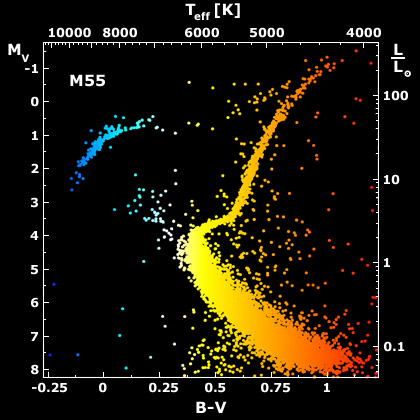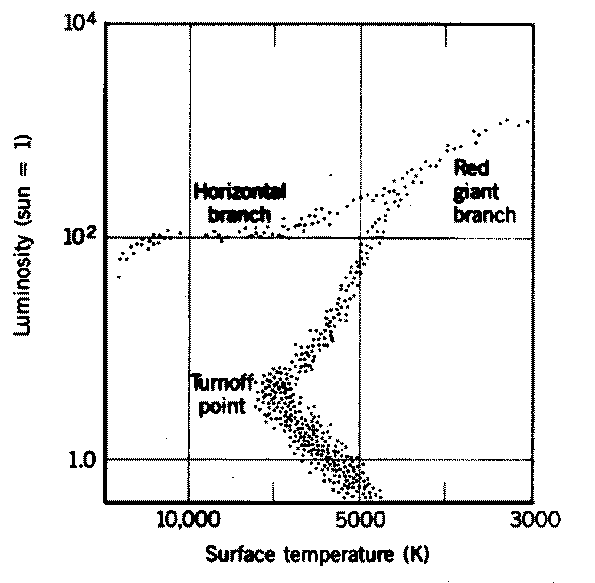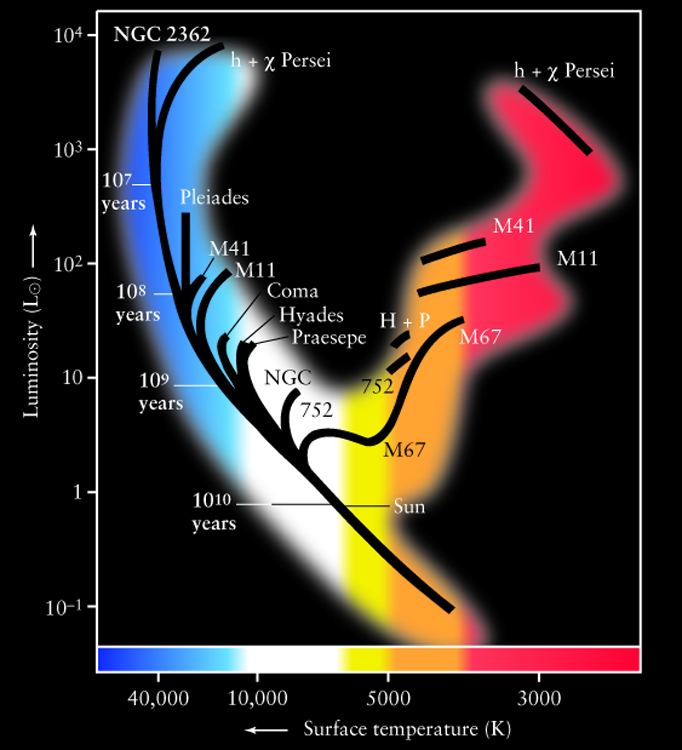Test of Stellar Structure and Evolution |

|
From: Mochejska & Kaluzny (see APOD, 2001 Feb 23)
Testing our ideas about the structure and evolution of stars is very
difficult because:
- we cannot see into the interiors of stars (except by using
neutrinos and helioseismology [stellar seismology]--techniques which
are difficult to apply to stars other than the Sun).
- stellar evolution takes an exceedingly long amount of time and so we
cannot watch individual stars run through their lifetimes -- we take
snapshots of many stars and try to piece together based on the
snapshots.
There are opportunities to test our ideas about stellar structure and
evolution, however. One is the distribution of the stars in the
Hertzsprung-Russell diagram. Theory easily meets this challenge.
We understand Main Sequence stars. Another is to examine the properties
of stars in different stellar clusters.
Why is this a productive thing to do?
Answer.
- Stars and clusters are produced in the Galaxy
today and were also
among the
first objects
produced
in the Galaxy. As such they offer glimpses into the
stellar evolution process which cover timespans ranging from a few
million years (the Pleiades) to more than 14 billion years (the Globular
Clusters) and snapshots of stars of all masses (presumably).
- The appearance of
Hertzsprung-Russell diagrams for clusters of various ages
is deduced through theoretical modeling.
A typical
result
- Given such predictions, clusters of various ages can be observed in
order to check on the validity of the theory based upon the appearance of
their Hertzsprung-Russell diagrams,

Very Young Cluster |

Very Old Cluster |
Ages of Clusters
Using the notion that we understand stellar structure then allows us to
estimate the ages of clusters of stars. The basic notion is that
massive
stars evolve faster than low mass stars and so, old clusters will not
show
hot Main Sequence stars (H-R diagrams for a set of different age clusters
The hottest Main Sequence stars in the cluster place upper limits on the
age of the cluster.
- Which cluster is the oldest?
- Which cluster is the youngest?
|
 . .
|
The oldest stellar systems in our Galaxy are the Globular
Clusters,
however there are also some very old
Galactic
Clusters (M67).
Here is a typical HR diagram for a globular
cluster.
The point where the stars leave the Main Sequence is known as the
turn-off point and is an indicator of the rough age of the
cluster.
The oldest globular clusters in our Galaxy are estimated to have
ages of 11-18 billion years.
This is an amusing result because independent measurements
of the age of the Universe (based on the standard model
for the Universe) give an age of 13.8 billion years.




 .
.